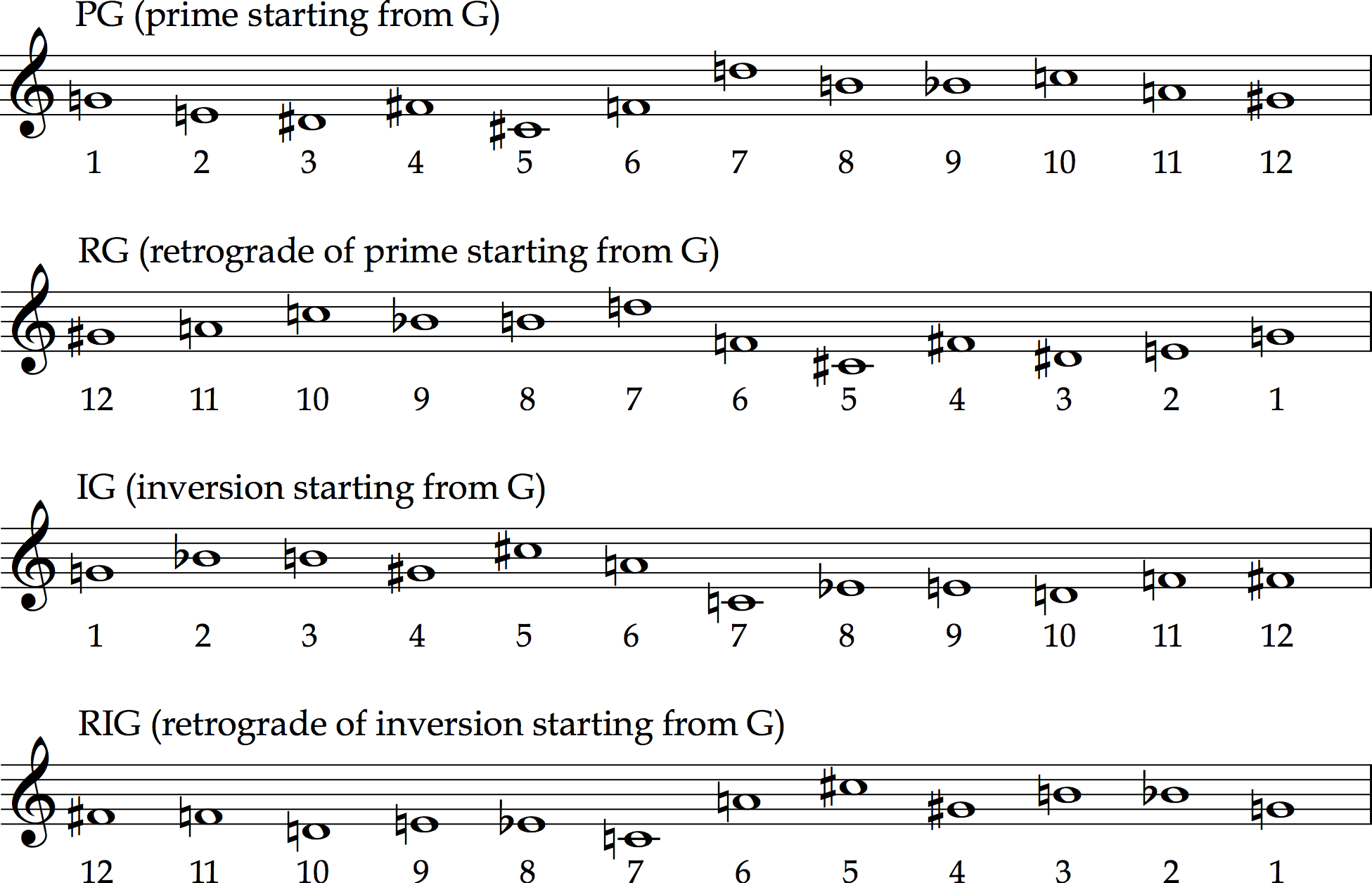Serialism
| Why am I learning this? Serialism has been hugely influential, especially in the post-war period. It’s not for everyone, but everyone can appreciate having their ears and minds opened to new ways of combining sounds. |
Serialism is the use of an ordered series of elements in composition. These elements could be rhythms, instruments, or anything else, but the most common kind of serialism is twelve-tone serialism. Twelve-tone music uses an ordering of the twelve pitch classes. Similar to a scale, this series or row determines possibilities for chords and melodic lines, typically one row per piece. There are hundreds of millions of possible rows. A row can be transposed, inverted, and retrograded, yielding up to 48 different row forms. A statement of a row in a piece of music (using a particular row form) is called a row statement.
History and etymology
The Austrian composer and theorist Arnold Schoenberg invented twelve-tone music in the 1920s to provide a sense of logic analogous to that of harmonic function. His students Alban Berg and Anton Webern adopted the method, as did many other composers (see a list here), who also serialized other elements. The American composer and theorist Milton Babbitt and others developed the method by theorizing additional operations besides transposition, inversion, and retrograde and additional techniques for combining rows.
Schoenberg called the method composition with twelve tones related only to one another. He meant to call attention to how the method tends to ensure an absence of tonality, and absence of a perceptible relation to just one tone.
Row forms
The operations of transposition, inversion, and retrograde yield four kinds of row forms that can be turned into one another: prime (regular), retrograde (backwards), inversion (upside-down), and retrograde inversion (upside-down and backwards). Row forms are identified by their kind and an endpoint: first note for prime and inversion, last note for retrograde and retrograde inversion. For example, here are the four row forms used in Anton Webern’s “Wie bin ich froh,” no. 1 of Three Songs, op. 25 (1935):

The members of a row are identified by order numbers 1 through 12 (or 12 through 1 for retrograde and retrograde inversion). (Note: there is some variety in the labels for row forms and order numbers. Common alternatives include the use of pitch-class numbers, distinct order numbers for retrogrades and retrograde inversions, and the order numbers 0–9, T, E or 0–9, A, B instead of 1 through 12.)
Harmony
A row can be used as a single melodic line or multiple lines and/or chords. Different row forms can also be used together. In Schoenberg’s serial music, row forms are often paired in such a way that their first halves together form an aggregate, a complete statement of the chromatic scale, as do their second halves.
Example: Arnold Schoenberg, Piano Piece, op. 33a (1928), mm. 14–18 (Burkhart, p. 230/470): The right hand has one row form starting on Bb, and the accompaniment has an inversion starting on Eb. The first phrase (the first halves of the row statements) forms an aggregate, and the second phrase (the second halves of the row statements) forms another aggregate.
Further reading
- Stephen Kostka, Materials and Techniques of Post-Tonal Music, Chapters 10 and 13
- Vincent Persichetti, Twentieth-Century Harmony, Chapter 12
- Miguel Roig-Francolí, Understanding Post-Tonal Music, Chapter 7, 8, and 9
- Joseph Straus, Introduction to Post-Tonal Theory, Chapters 5 and 6
External links
Wikipedia has a brief article on serialism in general and a fair introduction to twelve-tone composition.
